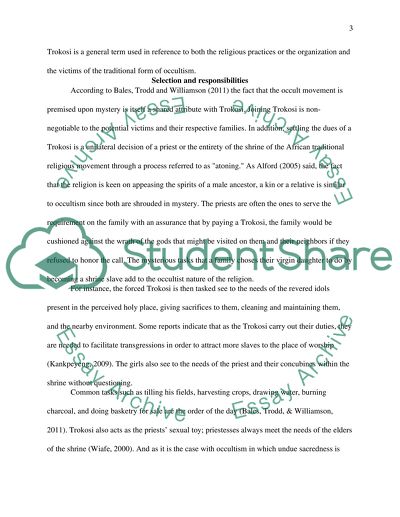Cite this document
(“Trokosi as a Form of Modern-day Slavery Term Paper”, n.d.)
Trokosi as a Form of Modern-day Slavery Term Paper. Retrieved from https://studentshare.org/religion-and-theology/1660422-trokosi-as-a-form-of-modern-day-slavery
Trokosi as a Form of Modern-day Slavery Term Paper. Retrieved from https://studentshare.org/religion-and-theology/1660422-trokosi-as-a-form-of-modern-day-slavery
(Trokosi As a Form of Modern-Day Slavery Term Paper)
Trokosi As a Form of Modern-Day Slavery Term Paper. https://studentshare.org/religion-and-theology/1660422-trokosi-as-a-form-of-modern-day-slavery.
Trokosi As a Form of Modern-Day Slavery Term Paper. https://studentshare.org/religion-and-theology/1660422-trokosi-as-a-form-of-modern-day-slavery.
“Trokosi As a Form of Modern-Day Slavery Term Paper”, n.d. https://studentshare.org/religion-and-theology/1660422-trokosi-as-a-form-of-modern-day-slavery.


